Background: Open Source Ecosystems and Internet Art in the Post-AI Age
Open source has long fueled software innovation and digital creativity through collaborative knowledge sharing. From early code exchanges in BYTE magazine to expansive online communities, it empowered not only developers but also new media artists who use Internet technologies—many of them open source—as expressive tools. However, in the post-AI age, open source communities face a sustainability crisis. As users shift toward generative AI and corporations profit from community-trained models without reciprocity, participation declines and the values of openness are increasingly challenged.
Why should we care about open source?
The open source ecosystem supports many aspects of our modern society. It positively impacts a wide range of entities, from government sectors and IT corporations to individuals as product developers and user.
Problem Statement
My research investigates how the popularity of GenAI applications influences the dynamics of the open source ecosystem and what these changes mean for new media artists as active participants of open source communities. Specifically, it explores the following questions: 1) How does the popularity of GenAI applications affect the relationship between the open source community and new media artists as users and contributors? 2) What opportunities and/or challenges do GenAI applications bring to the open source communities and new media artists?
Project Goal
To explore and communicate the evolving dynamics of the open source ecosystem, I proposed Bazaar.log, a speculative simulation in the form of a browser-based game. This game functions as both a research prototype and a critical design intervention, aiming to provoke reflection on the sustainability and future development of open source ecosystems in the post-AI era.
Process
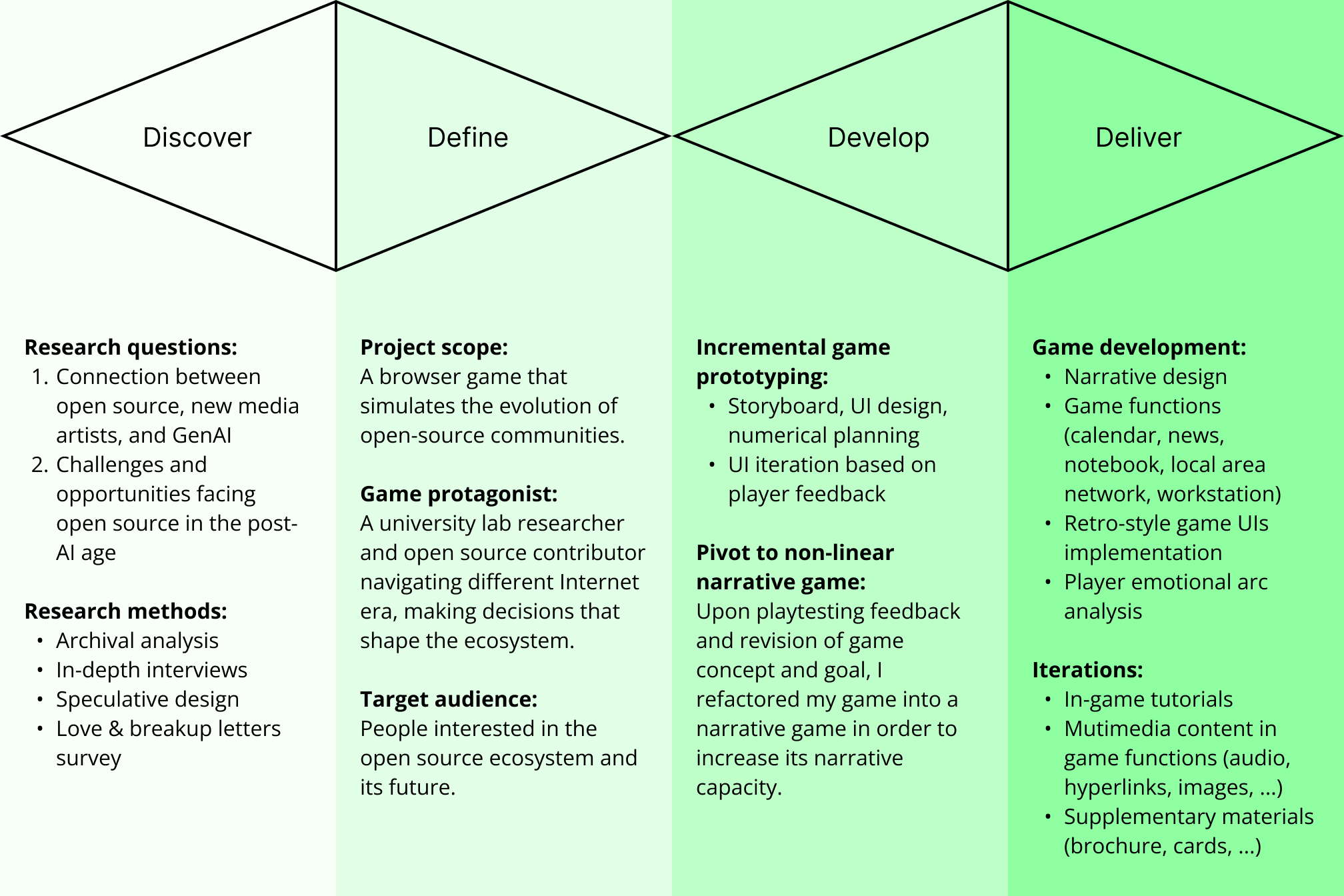
Diagram of Bazaar.log game development process.
Research Result
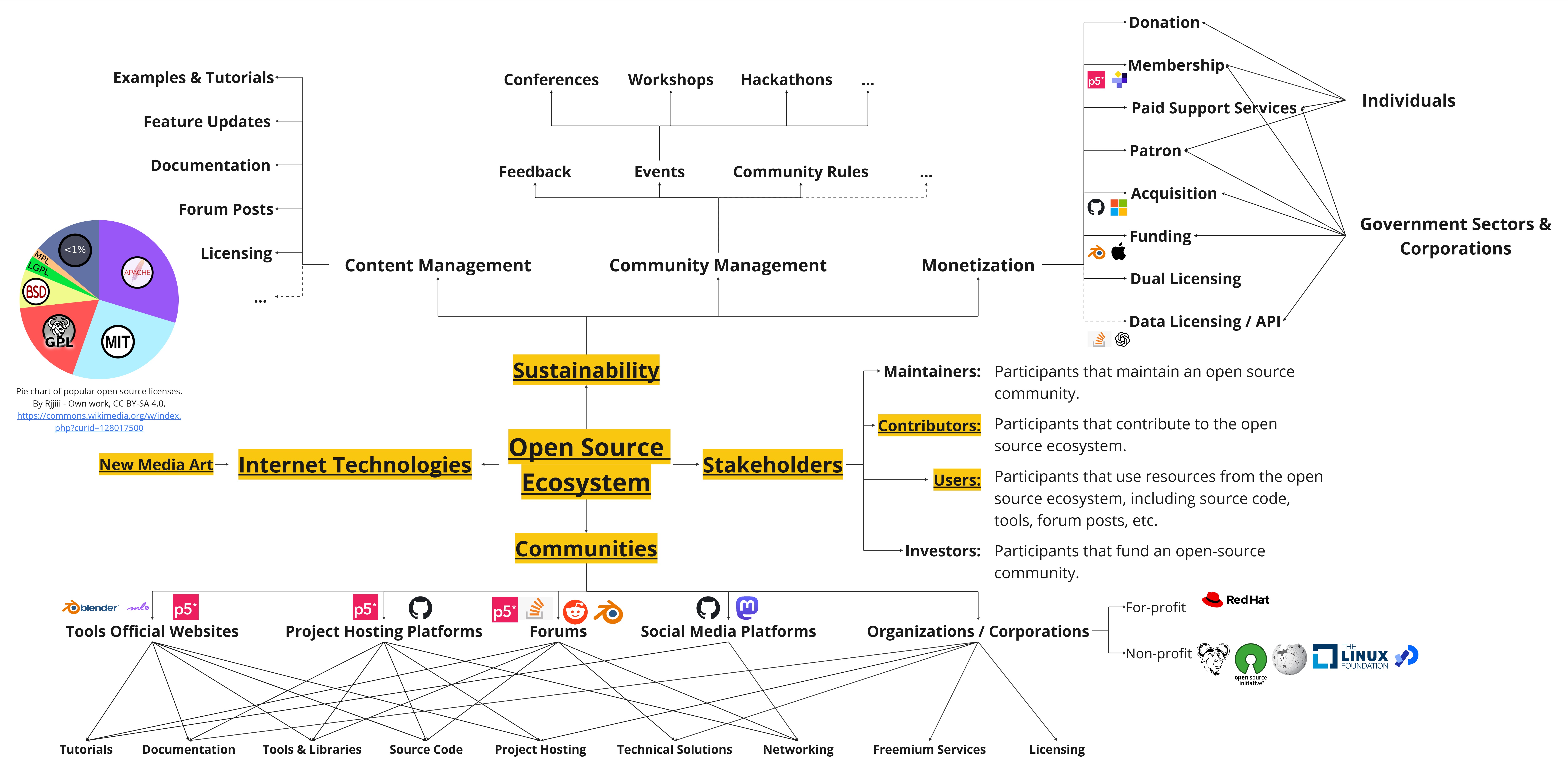
Diagram of open source ecosystem.
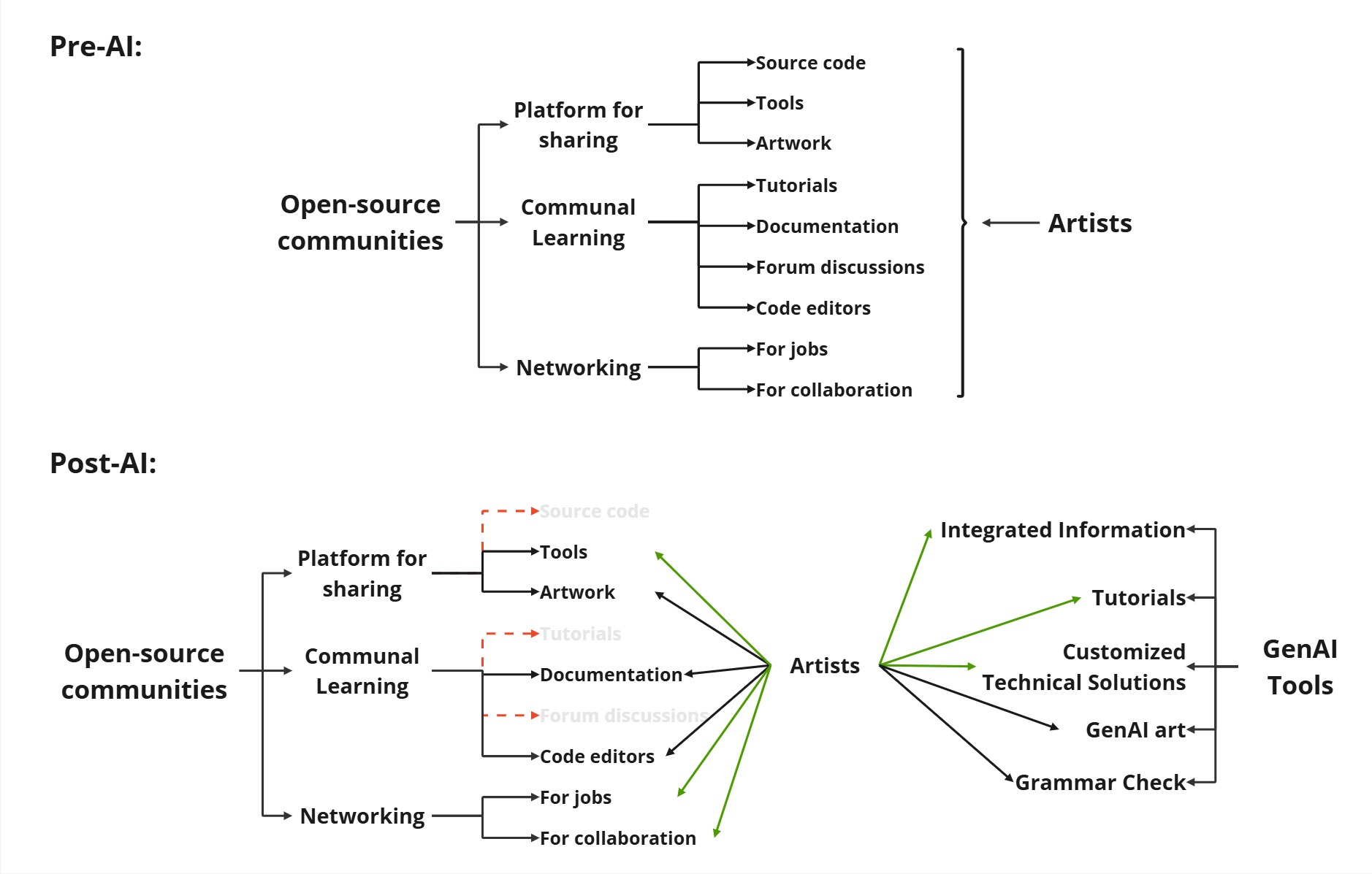
Comparison of the connections between artists and open source ecosystem before and after the existence of GenAI.
Challenges and Solutions
Bazaar.log has gone through several rounds of player feedback and iterations, each posed new challenges followed by solutions.
Challenge 1: information capacity
Incremental games have limited information capacity in my game's context, as the open source ecosystem is too complex to be boilded down to a few metrics.
Solution:
- Pivoted from incremental game to narrative game in order to deliver more contextual information.
Challenge 2: effective storytelling
How to make the game look less like a boring history book and pique curiosity of players?
Solutions:
- Created non-linear storytelling mechanism, let player decisions matter for the game progress.
- Leveraged browser functions to enhance the fun of the game (pop-up windows, hyperlinks, etc.).
Challenge 3: lack of guidance
Players can get lost in some interfaces like the Pre-Internet CLI screen.
Solutions:
- Developed optional in-game tutorials.
- Created physical user guide brochure in retrospective style.
Outcome
Bazaar.log: A History-Based Game in Browser
The experience begins in 1970, as ARPANET becomes available to academic institutions, marking the dawn of virtual connectivity. Players take on the role of a researcher working in a university computer lab. Using five core functions—news, notebook, local area network (LAN), calendar, and workstation—players navigate key moments in the history of the Internet and open source development. Along the way, they make decisions that shape their journey, leading to multiple possible endings that encourage reflection on how different choices might impact the open source future.
The name "Bazaar.log" consists of two parts. “Bazaar” is meant to to be a tribute to the book The Cathedral and The Bazaar by Eric S. Raymond, where Eric uses the metaphor of Bazaar to illustrate the structure of the open source software development; “.log” is a common extension for log files that record activities within a system or applications, so it functions as an interesting indication of the history-based game narrative.
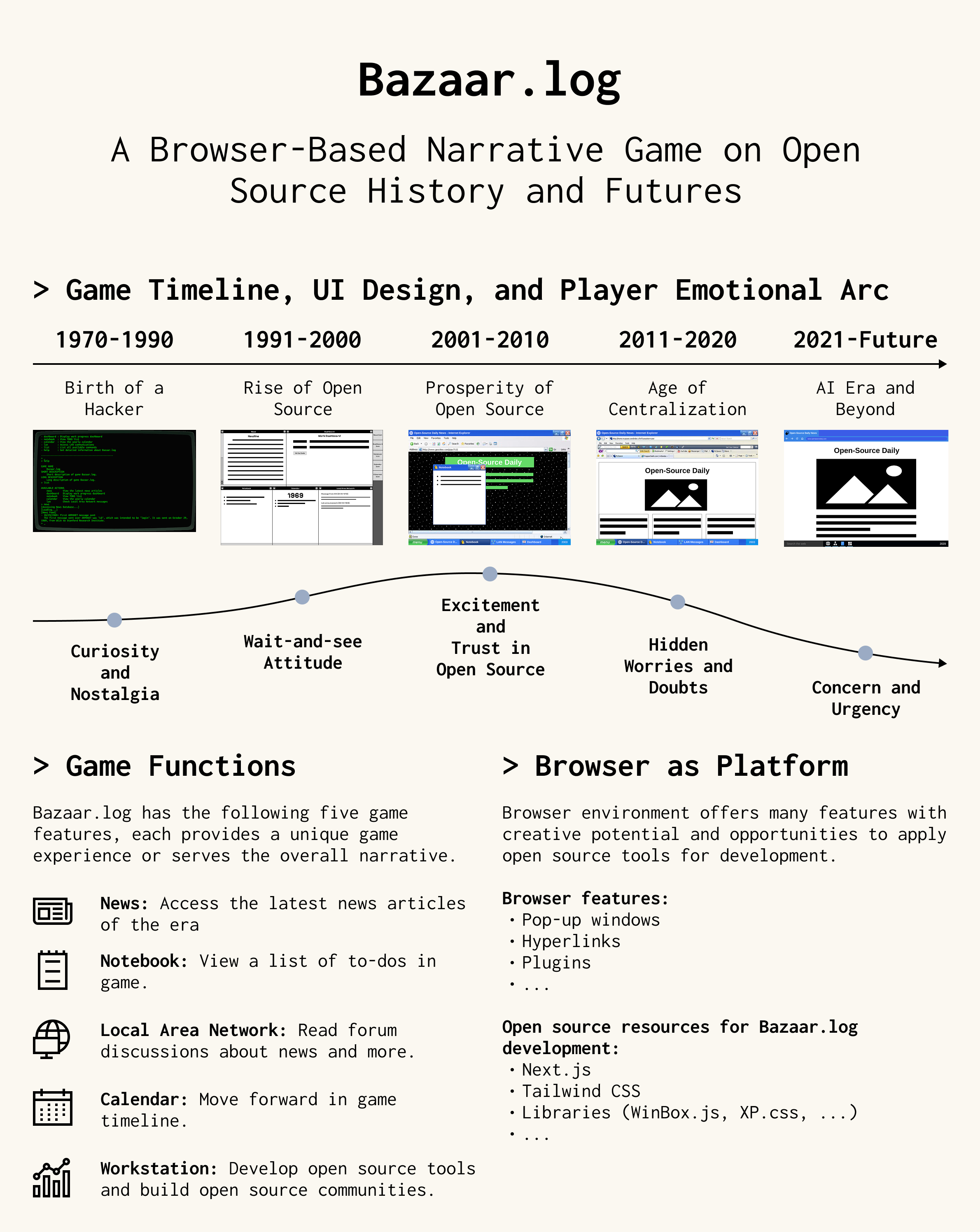
Diagram of Bazaar.log Game.
Screenshots from Bazaar.log
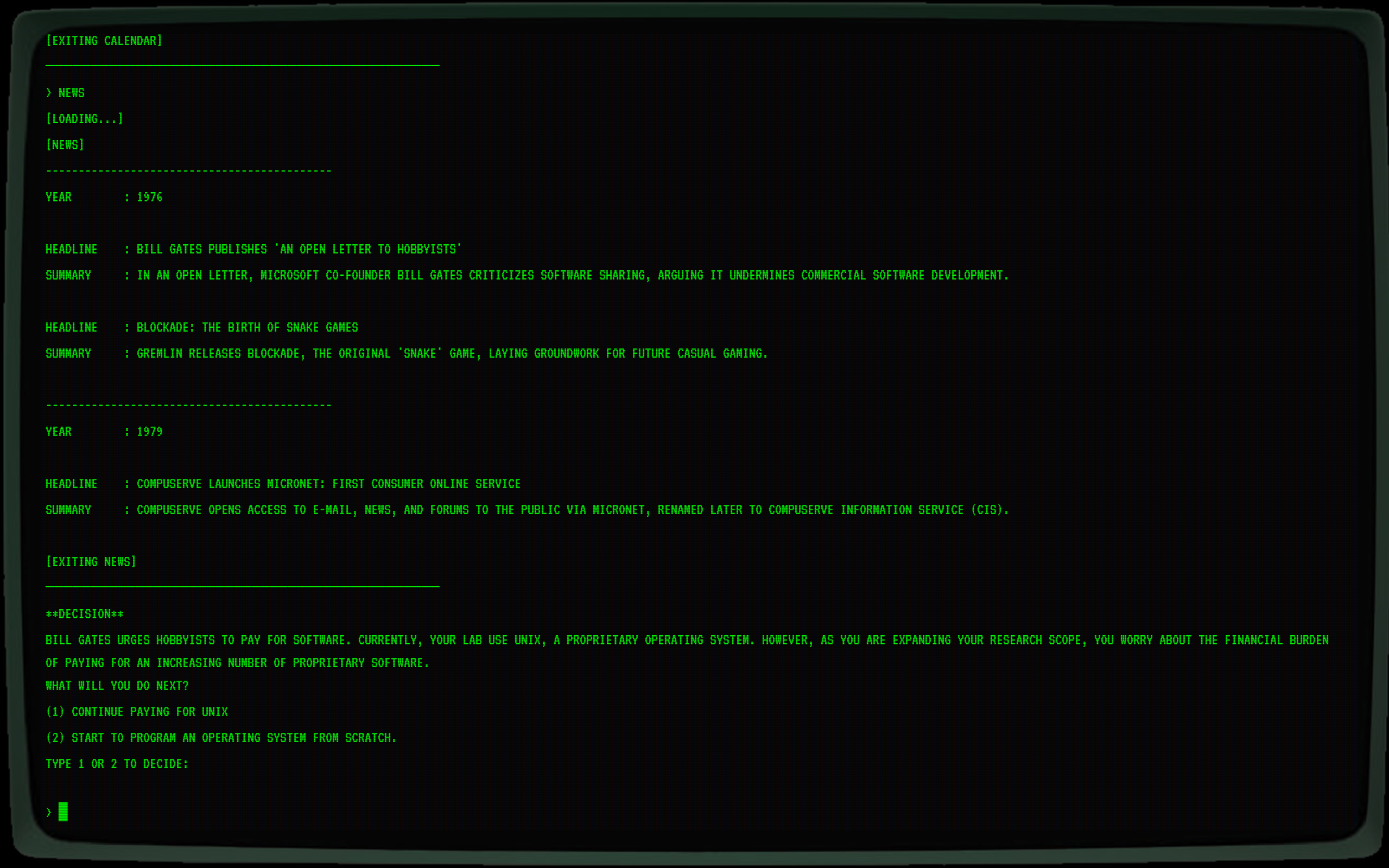
Game stage 1: Pre-Internet. Before the graphical user interface (GUI) existence, human computer interaction is achieved via Command Line Interface (CLI).
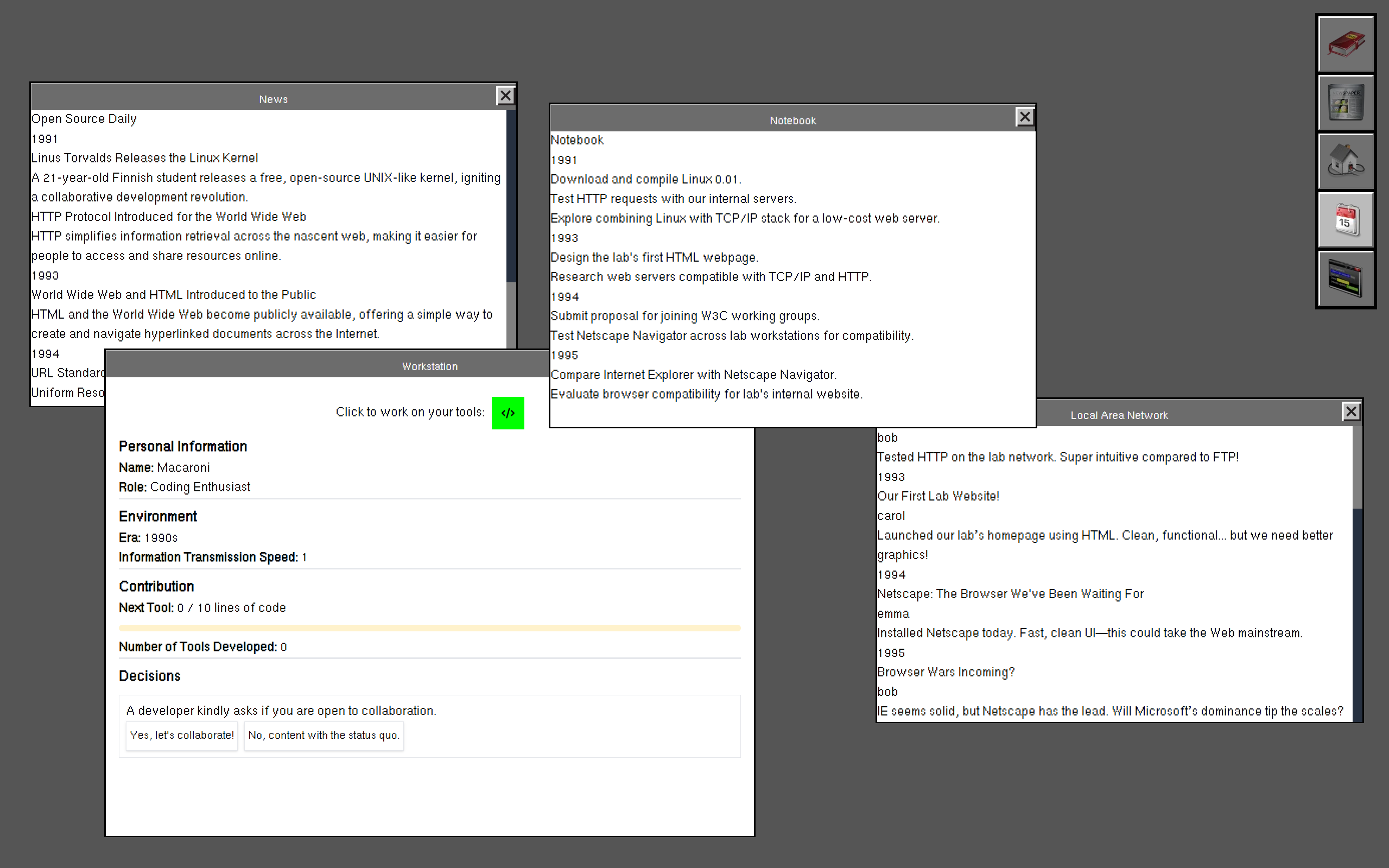
Game stage 2: GUI in 1990s. As personal computers became popular in the 1990s, products like computers with GUIs and web services were lauched.
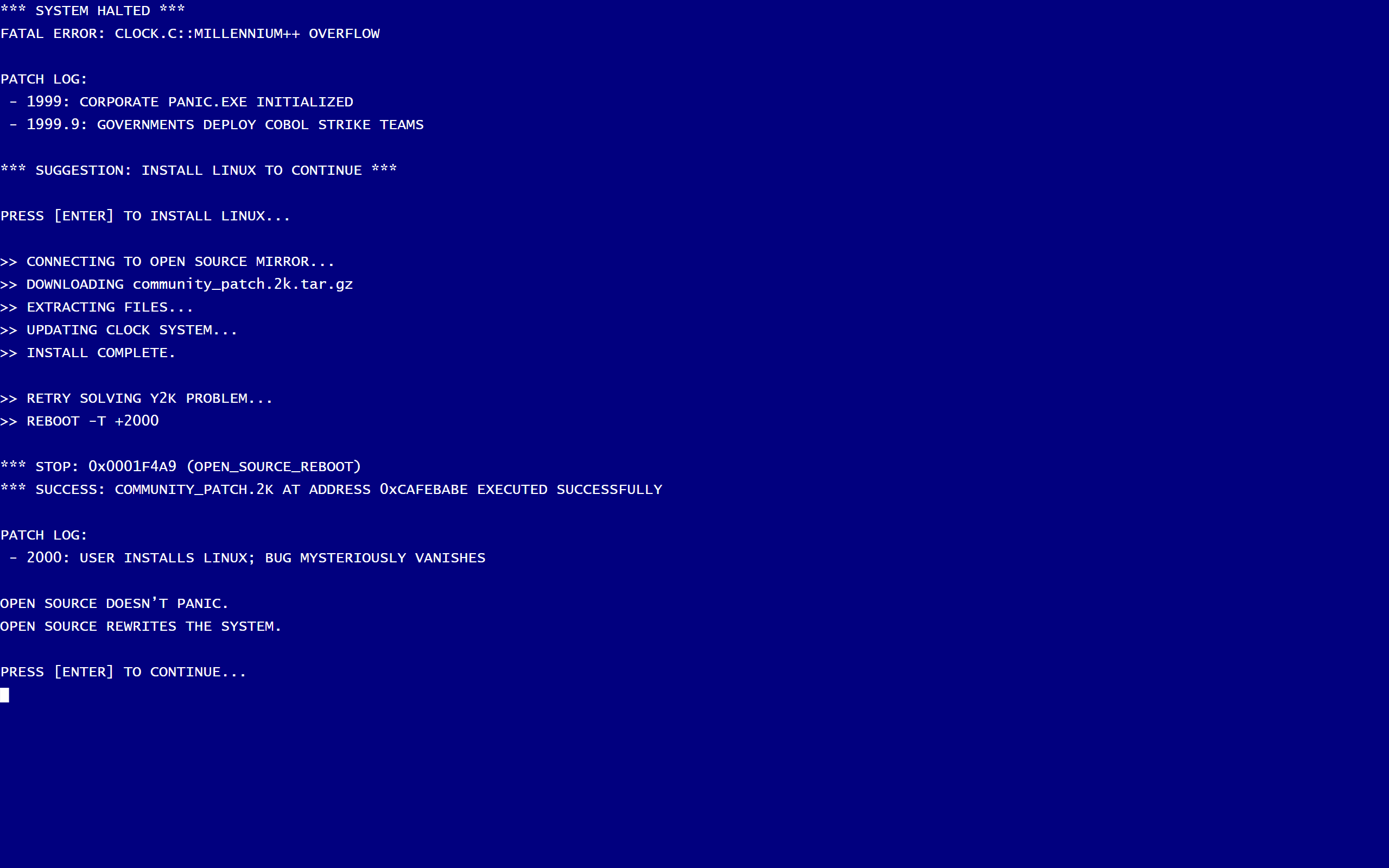
Game stage 3: Blue Screen of Death (BSOD). BSOD is a critical screen in Windows indicating the system encounters a fatal error. The inspiration came from Y2K problem of computers misintepreting 2000 as 1900, which was a great concern of especially governments and IT corporations. Open source communities contributed to solving this problem in short time by leveraging collective wisdom online and organizing system updates at large scale.
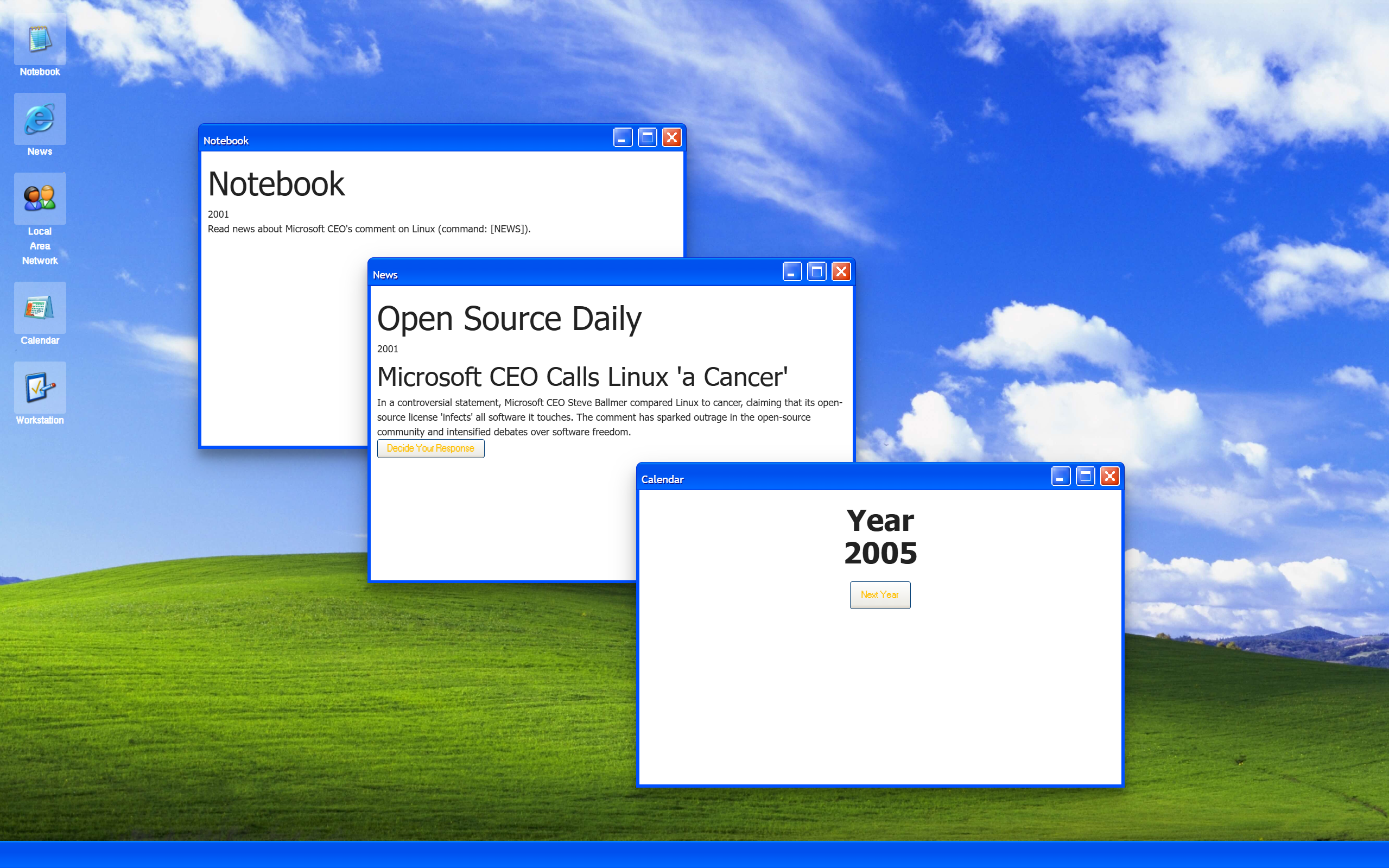
Game stage 4: interface featuring a Windows-XP-style look in the 2000s.
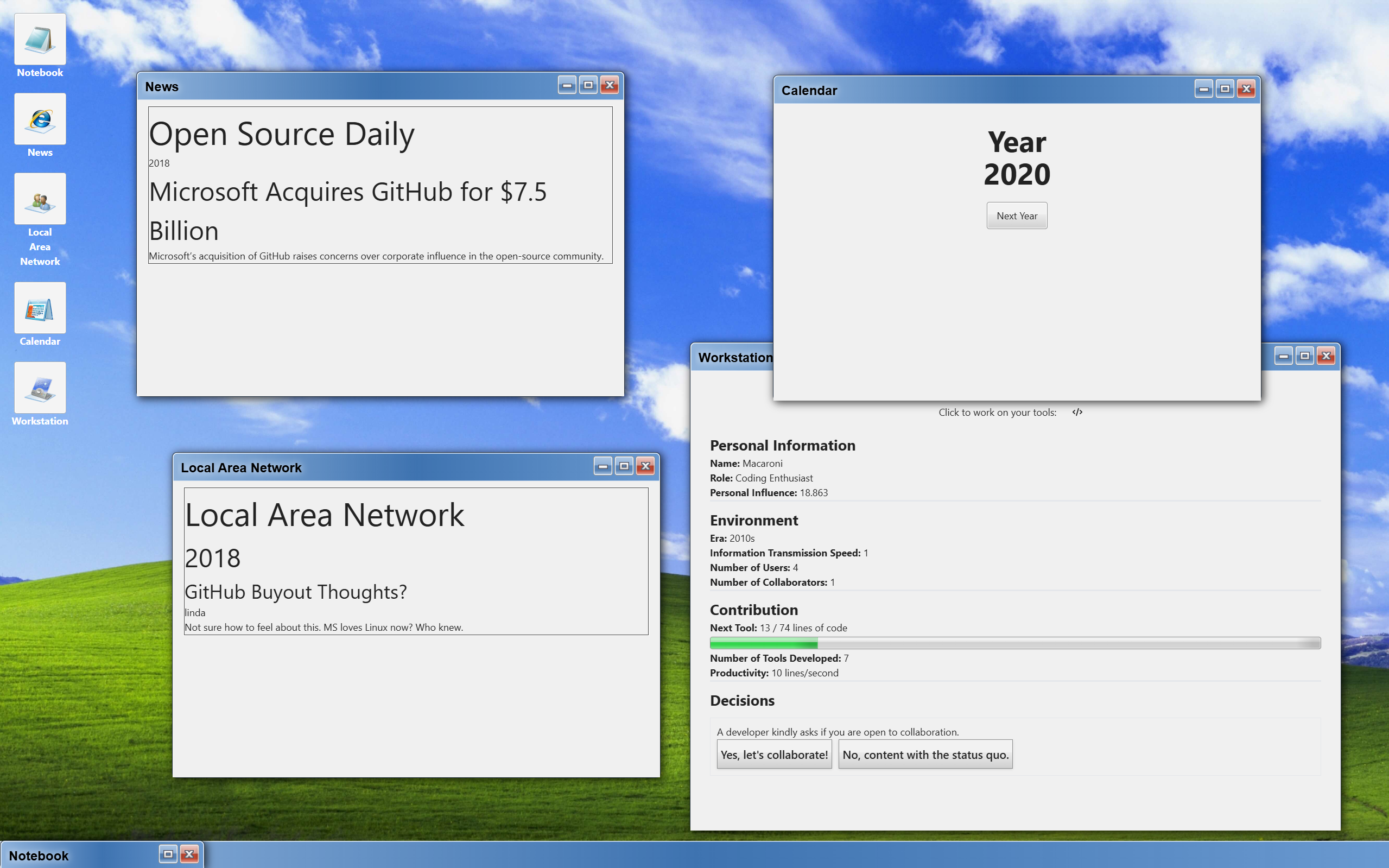
Game stage 5: interface featuring a Windows-7-style look in the 2010s.
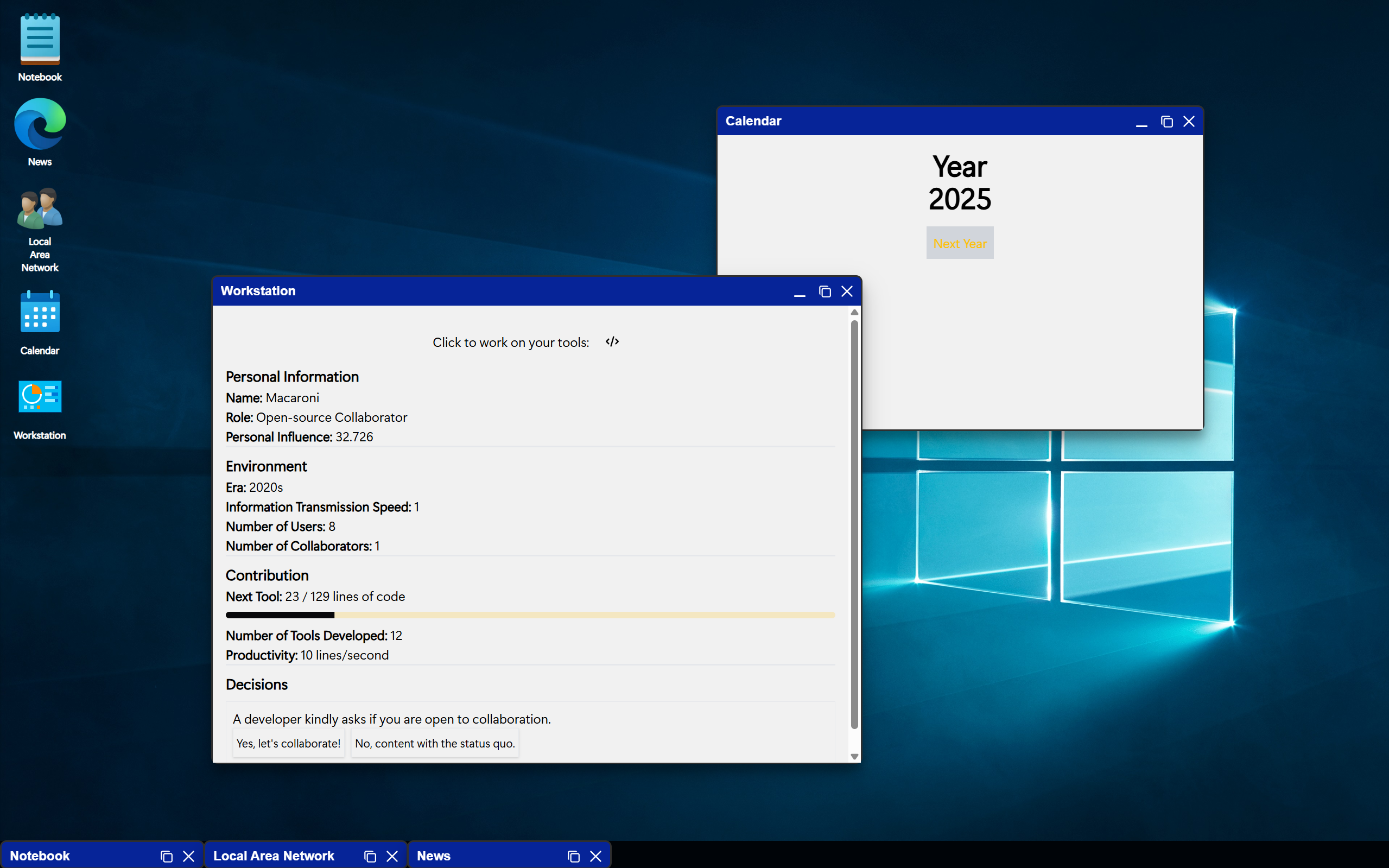
Game stage 6: interface featuring a Windows-10-style look in the 2020s.
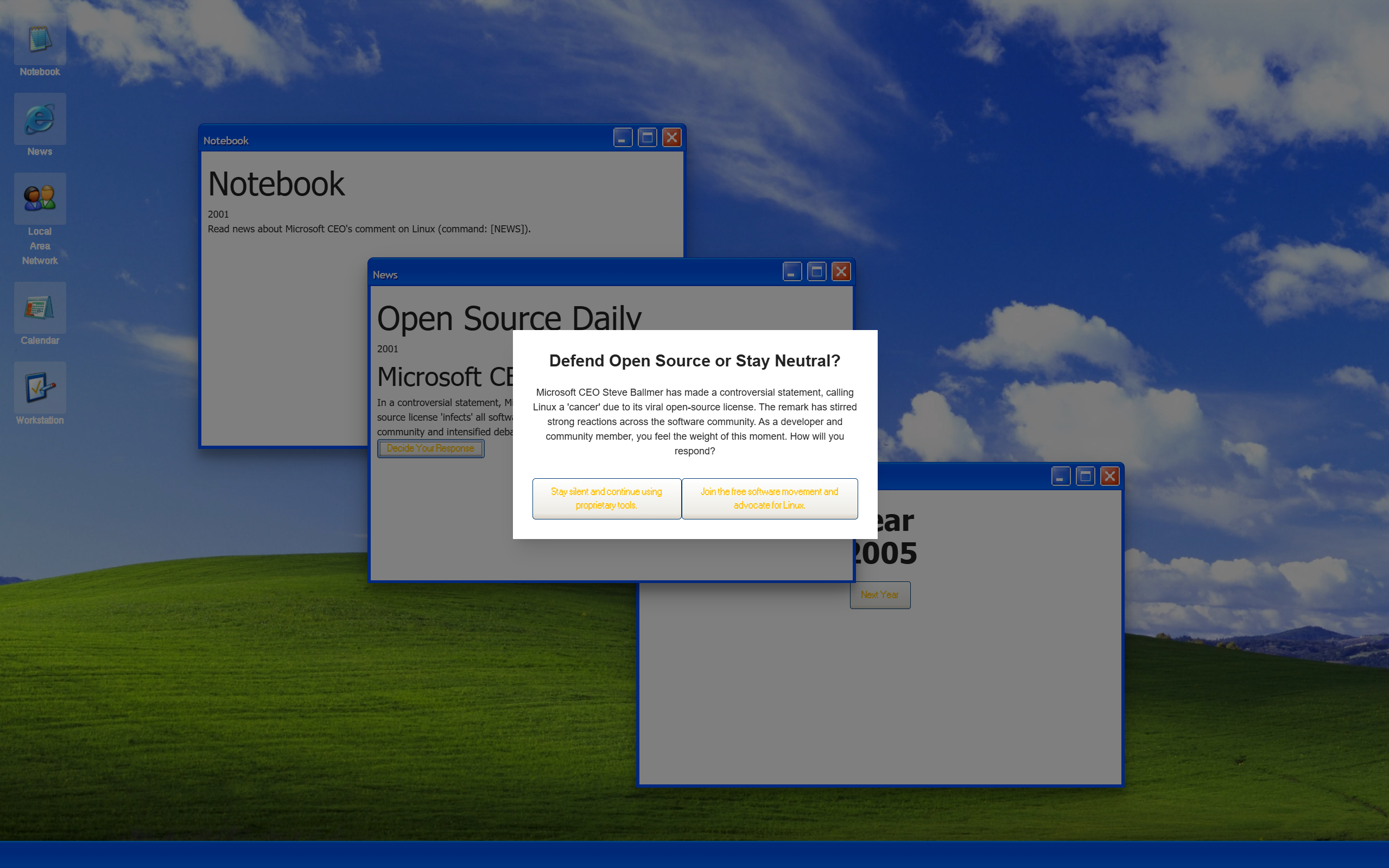
An in-game decision. There are several decision nodes throughout the game, where players need to make a decision in response to the open source news / events of that era. Each decision will lead players to either an instant game over or an approval of moving forward.

Result of an in-game decision.
Brochure and Cards
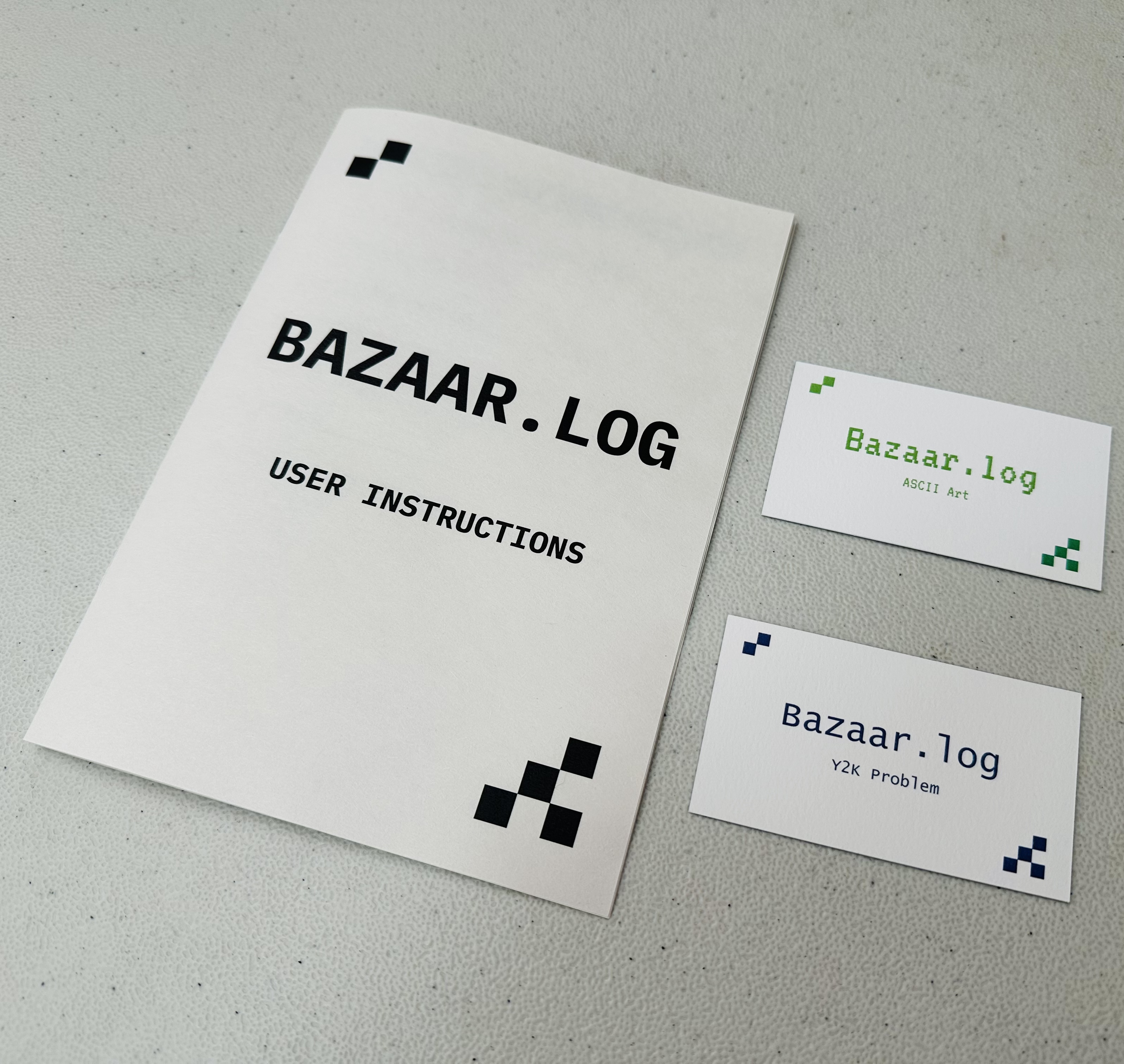

Bazaar.log brochure designed for helping players navigate the first CLI-style game interface.
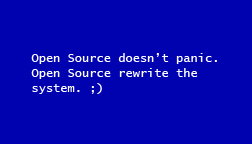
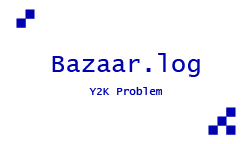
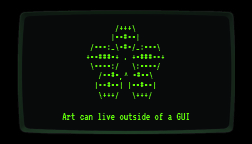
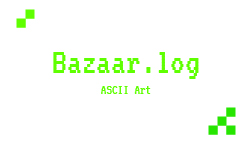
Conclusion
Upon my research and work, below are my takeaways.
- There are still needs for open source resources, but contributors are reluctant to contribute due to the existence of GenAI tools.
- GenAI changed the connections between artists and open source communities, but open source communities are still competitive due to their provision of accessible tools, communal learning environment, and networking opportunities.
- Open source sustainability matters for modern society.
- Players have a vague idea about the "open source" concept, and they are interested in learning more about its history. However, the game genre and interaction design matters in order to retain their curiosity and learning motivation.
- Bazaar.log has the potential to adopt an open source method for game development. This way, it will become a collection of memories and thoughts from the public about open source, and meaningfully contribute to a sustainable open source future.